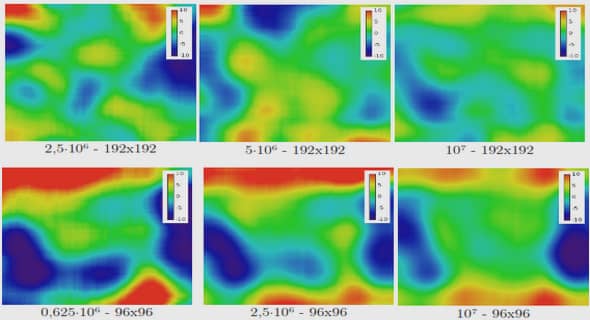Sommaire: Métallation et substitution nucléophile aromatique des acides benzoiques non protégés
LISTE DES FIGURES
LISTE DES SCHEMAS
LISTE DES TABLEAUX
PRINCIPALES ABREVIATIONS
INTRODUCTION GENERALE
CHAPITRE 1 — SYNTHESE TOTALE RACEMIQUE D’ANALOGUES STRUCTURAUX DE L’APOGOSSYPOL METTANT EN JEU DES REACTIONS DE METALLATION AROMATIQUE INTRODUCTION
2- STRUCTURE, STEREOISOMERIE ET TAUTOMERIE DU GOSSYPOL
3- BIOSYNTHESE DU GOSSYPOL
4- HEMISYNTHESE DE DERIVES DU GOSSYPOL
5- SYNTHESE TOTALE DU GOSSYPOL, DE SES DERIVES ET ANALOGUES –LITTERATURE
5-1- Synthèse totale asymétrique du gossypol par Meyers
5-2- Synthèse totale racémique de l’apogossypol protégé 1.39 et du 1,1’-didésoxygossypol (1.51)
5-3- Synthèse d’analogues de l’hémigossypol, de l’apogossypol ou du gossypol diversement substitués en position 5
6- BIOLOGIE DU GOSSYPOL ET DE SES DERIVES.
6-1- Activité contraceptive
6-2- Activité antivirale et antiparasitaire
6-3- Activité antioxydante et inhibition de la prolifération des kératinocytes
6-4- Activité anticancéreuse
7- SYNTHESE TOTALE RACEMIQUE D’ANALOGUES STRUCTURAUX DE L’APOGOSSYPOL — RESULTATS
ANTERIEURS
7-1- Ortho-métallation des acides benzoïques et naphtoïques
7-2- Synthèse d’analogues du gossypol − Études préliminaires
8- SYNTHESE TOTALE RACEMIQUE D’ANALOGUES STRUCTURAUX DE L’APOGOSSYPOL — RESULTATS
9- CONCLUSION — PERSPECTIVES
10- PARTIE EXPÉRIMENTALE
10-1- Instrumentation
10-2- Materials
10-3- Preparation of 4-hydroxy-6,7-dimethoxy-8-methyl-2-naphthoic acid (1.104)
10-4- Lateral lithiation of 4-hydroxy-6,7-dimethoxy-8-methyl-2-naphthoic acid (1.104)
10-5- Preparation of 3-(hydroxymethyl)-6,7-dimethoxy-5-alkylnaphthalen-1-ols 1.116 and 1.117a-d
10-6- Preparation of 6,7-dimethoxy-3-methyl-5-alkylnaphthalen-1-ols (1.118), 1.119a-d and 6,7dimethoxy-2,8-dimethyl-1,2,3,4-tetrahydronaphthalene (1.120)
10-7- Dimerization reactions. Preparation of binaphthalenes 1.121.
10-8- Dimerization reactions. Preparation of binaphthalenes 1.122, 1.123a-d
CHAPITRE 2 — VERS LA SYNTHESE ATROPOSELECTIVE D’ANALOGUES DU GOSSYPOL
1- INTRODUCTION
2- SYNTHESES ATROPOSELECTIVES DE BIARYLES – LITTERATURE
2-1- Couplage biarylique diastéréosélectif
2-2- Synthèse énantiosélective de biaryles
2-3- Transformations atroposélectives de biaryles pro-chiraux – Concept lactone
3- VERS LA SYNTHESE ATROPOSELECTIVE D’ANALOGUES DU GOSSYPOL EN UTILISANT LE CONCEPT
LACTONE – RESULTATS.
3-1- Rétrosynthèse
3-2- Synthèse de l’ester 2.15 (voie A)
3-3- Synthèse de la lactone 2.14 à partir de l’ester 2.16 (voie B)
4- CONCLUSION –PERSPECTIVES
5- PARTIE EXPERIMENTALE
3-Bromo-4-hydroxy-6,7-dimethoxy-8-methylnaphthalen-2-carboxylic acid (2.19)
3-Bromo-4,6,7-trimethoxy-8-methylnaphthalen-2-carboxylic acid (2.18)
3-Bromo-4,6,7-trimethoxy-8-methyl-2-naphthalen-2-carboxylic acid 6,7-dimethoxy-3,5-dimethylnaphthalen-1-yl ester (2.16)
2,3,9,10,12-Pentamethoxy-1,8,13-trimethyl-5-oxa-benzo[b]chrysene-6-one (2.14)
2,2-Dimethyl-propionic acid 6,7-dimethoxy-3,5,dimethyl-naphtalen-1-yl ester (2.20)
CHAPITRE 3 — SUBSTITUTION NUCLEOPHILE AROMATIQUE DES ACIDES BENZOÏQUES PROTEGES — ÉTUDE DE L’INFLUENCE DES SUBSTITUANTS
1- INTRODUCTION
2- DEVELOPPEMENT DE LA REACTION S N
AR ASSISTEE PAR LES ESTERS
2-1- Nature de l’ester utilisé
2-2- Influence des nucléophiles carbonés sur la réaction S
2-3- Influence de la substitution de l’ester sur la réaction S
N Ar activée par les esters N Ar
2-4- Synthèse atroposélective de biaryles chiraux.
3- SUBSTITUTION NUCLEOPHILE AROMATIQUE ASSISTEE PAR LES OXAZOLINES.
4- SUBSTITUTION NUCLEOPHILE AROMATIQUE ASSISTEE PAR LES AMIDES
5- CONCLUSION
CHAPITRE 4 — SUBSTITUTION NUCLEOPHILE AROMATIQUE DES ACIDES BENZOÏQUES NON PROTEGES POLYMETHOXYLES/HALOGENES AVEC LES ARYLORGANOMAGNESIENS ET LITHIENS
1- INTRODUCTION
2- METALLATION DES ACIDES HALOGENOBENZOÏQUES ET METHOXYBENZOÏQUES NON PROTEGES – LITTERATURE
3- LA REACTION SNARAB – LITTERATURE ET TRAVAUX ANTERIEURS DE L’EQUIPE
3-1- Formation de liaisons carbone – hétéroatome (O, N)
3-2- Formation de liaison carbone – carbone
4- LA REACTION SN
5- LA REACTION SN
ARAB – INFLUENCE DU GROUPEMENT ALCOXY —RESULTATS
ARAB – INFLUENCE DES HALOGENES
5-1- Préparation d’acides poly(halogéno)benzoïques
5-2- Réactivité des acides 2-fluoro-Z-halogénobenzoïques (3 ≤ Z ≤ 6) avec le bromure de pméthoxyphénylmagnésium.
5-3- Réaction SAr des acides 2,6- et 2,4-difluorobenzoïques et 2-chloro-6-fluorobenzoïque (4.8d, 4.8b et 4.9d) avec le p-méthoxyphényllithium N
5-4- Application de la réaction S N
ArAB à la synthèse des acides 3-halogéno-2-biphénylcarboxyliques
5-5- Réactivité des acides 2,3,6- et 2,4,6-trifluorobenzoïques (4.87) et (4.88) avec le bromure de pméthoxyphénylmagnésium
5-6- Synthèse de terphényles par SN ArAB — Résultats préliminaires.
6- CONCLUSION – PERSPECTIVES
7- PARTIE EXPÉRIMENTALE
7-1- Reactions of 2,Z-dimethoxybenzoic acids (4.7a-d) and 2,3,4-trimethoxybenzoic acid (4.43) with 4MeOC
MgBr (Table 12 and table 13)
7-2- Reactions of 2,3-dimethoxybenzoic acid (4.7a) and 2,6-dimethoxybenzoic acid (4.7d) with phenyllithium
7-3- Preparation of poly(halo)benzoic acids
7-4- SAr reactions of 2-fluoro-Z-halobenzoic acids with p-methoxyphenylmagnesium bromide (Table 14)
7-5- SNAr reactions of 2,6-difluorobenzoic acid (4.8d) with p-methoxyphenyllithium (Table 15)
7-6- SNAr reactions of 2,6-difluorobenzoic acid (4.8d), 2-chloro-
6-fluorobenzoic acid (4.9d) and trifluorobenzoic acids 4.87 and 4.88 – Synthesis of 3-halo-[1,1’-biphenyl]-2-carboxylic acids 4.115-4.125
7-7- Synthesis of terphenyls
CONCLUSION GENERALE
REFERENCES BIBLIOGRAPHIQUES ET NOTES
ANNEXE
ABSTRACT
RESUME
Extrait du mémoire métallation et substitution nucléophile aromatique des acides benzoiques non protégés
Chapitre 1 — Synthèse totale racémique d’analogues structuraux de l’apogossypol mettant en jeu des réactions de métallation aromatique
1- Introduction
Le gossypol (1,1′,6,6′,7,7′-hexahydroxy-5,5′-di-iso-propyl-3,3′-diméthyl-2,2’binaphtalène-8,8′-dicarboxaldéhyde) (1.1) est le pigment principal des semences de coton. Ce composé binaphtalénique polyhydroxylé de symétrie C2 existe sous deux formes atropoisomères (R) et (S). La déconnexion de la liaison C2-C2’ donne deux naphtalènes identiques (Figure 2).
De nombreuses vertus thérapeutiques sont attribuées au gossypol
1: contraceptif oral masculin, antiviral, antipaludéen… Mais ce sont les propriétés anticancéreuses du gossypol qui sont actuellement les plus étudiées. Le gossypol est un bon ligand des protéines Bcl-2 qui interviennent dans la régulation de l’apoptose. Ces protéines sont souvent surexprimées dans de nombreux types de tumeurs humaines et leur inhibition constitue une cible de choix pour restaurer un processus normal d’apoptose. Or des chercheurs de l’université du Michigan ont montré que le gossypol assimilé par voie orale génère une telle inhibition. Plusieurs brevets ont été déposés
2 et une start-up, Ascenta Therapeutics (Malvern, Pennsylvania), a été créée pour développer cliniquement le produit par l’Université du Michigan. L’apogossypol (1.2) (Figure 3) correspond au gossypol déformylé. Il est moins toxique et plus stable que le gossypol.
Alors que les deux fonctions aldéhydes du gossypol sont indispensables pour cibler certaines protéines telles que les déhydrogénases, l’apogossypol présente également des propriétés antitumorales prometteuses.
D’un point de vue structural, le gossypol est constitué de deux parties: un bloc hydrophile et un bloc lipophile. Compte tenu de sa structure complexe, on trouve peu de travaux décrivant sa synthèse chimique.
Une seule synthèse totale asymétrique a été réalisée et seules les activités anticancéreuses du produit naturel, de prodrogues obtenues par modification structurale de la partie hydrophile (Figure 3) et de dérivés d’hémisynthèse (bases de Schiff, esters, éthers, etc…) avaient été décrites dans la littérature au commencement de nos travaux sur le gossypol. L’influence des deux groupements lipophiles 5,5’-di-iso-propyle et 3,3’-diméthyle sur les propriétés thérapeutiques du gossypol n’avait pas été étudiée. Des études de docking suggéraient néanmoins qu’il devait être possible de moduler l’activité biologique du gossypol (en termes d’efficacité et de spécificité) en modifiant notamment la nature des substituants en 5,5’.
…….
Métallation et substitution nucléophile aromatique des acides benzoiques non protégés (3.67 MB) (Rapport PDF)


